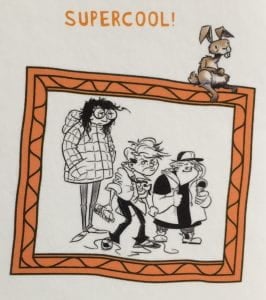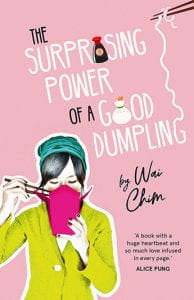 Life has a way of falling apart sometimes. For Mercy, the solution has been spending 2 years as a recluse in her home. When this house burns down, she is thrown out into the world and flounders to accept the help her ex-husband offers, which can only be temporary anyway.
Life has a way of falling apart sometimes. For Mercy, the solution has been spending 2 years as a recluse in her home. When this house burns down, she is thrown out into the world and flounders to accept the help her ex-husband offers, which can only be temporary anyway.
“This world isn’t easy when your shield shatters. When my character in The Other Side of Beautiful, a woman who hasn’t left her house for two years, watches that house burn down, Mercy Blain has no choice but to be flung into the world.” (Kim Lock discussing her main character, Mercy Blain.)
As this situation is clearly untenable, Mercy comes across a somewhat bizarre alternative. This sees her embark on a physical journey from Adelaide to Darwin, in a beat-up old vehicle with just her dog, Wasabi, as a companion.
For someone who has not left their house for 2 years, this is an amazing challenge, but one that proves to be the physical AND emotional journey she needs.
Mercy’s cautious initial steps mean that she is sparsely equipped, having lost most things in the fire. Her inner struggles also mean that she is often stretched to the limit to move beyond the many barriers she has set up over 2 years. Thus, her journey north is hesitant and full of extreme anxiety.
In Mercy’s steps, we learn about the suffocating effects of panic attacks, and we will her on as she travels north, alongside the movement of grey nomads and other travellers. The characters she meets are totally relatable, as is the Australian countryside they traverse. Those with a careful blend of friendliness and respect for the privacy of others allow Mercy to feel somewhat comfortable to continue her travels, in spite of early misgivings.

Along the way, certain roadblocks cause anxious situations for her to rise above while forcing her to accept the help and advice of others she meets. We fear her crashing along the way (both physically and literally) – will her solo journey be the end of things, or provide a new beginning? After all, there have been tragic losses in the outback for those unprepared and unwary.
There is a lot to mull over in ‘the Other Side of Beautiful’, including the pressures of social media vs the need to stay in touch. Mercy is trying to overcome past negativity, but needs to stay in communication with the real world she is running from, in order to move forward in life. There could be severe consequences if she doesn’t, but outback travel is not the most supportive in some areas.
Will she make it to ‘the Other Side’?
Note: I loved the references to Australians’ outback travels in RVs and well-appointed vans, but would have preferred Mercy’s vehicle to have been a beat-up old Kombi (but that’s just my personal preference…).

 Five children left at the Little Tulip Orphanage, Amsterdam – all in strange circumstances. Fast forward 12 years and the same five children are still there – seemingly unadoptable. That is, until a strange and sinister man comes to visit; to take them away.
Five children left at the Little Tulip Orphanage, Amsterdam – all in strange circumstances. Fast forward 12 years and the same five children are still there – seemingly unadoptable. That is, until a strange and sinister man comes to visit; to take them away. ‘Being Jazmine’ is the third book featuring Jazmine Crawford – part of the Invisible series by Cecily Paterson. That said, it was also a good read as a stand-alone title.
‘Being Jazmine’ is the third book featuring Jazmine Crawford – part of the Invisible series by Cecily Paterson. That said, it was also a good read as a stand-alone title. There was a clear indication at the end of
There was a clear indication at the end of 
 With so many great YA books about, it’s not often I pick up and review something for younger readers. However, I have just chuckled my way through the first book of ‘Derek Dool Supercool’ series – ‘Bust a Move’.
With so many great YA books about, it’s not often I pick up and review something for younger readers. However, I have just chuckled my way through the first book of ‘Derek Dool Supercool’ series – ‘Bust a Move’.
 How great is it to get a book which is written by, not one, but three renowned authors!
How great is it to get a book which is written by, not one, but three renowned authors! As already noted, it is also a collaboration between three talented Australian authors – Cath Cowley, Simmone Howell and Fiona Wood – and is soooo well done.
As already noted, it is also a collaboration between three talented Australian authors – Cath Cowley, Simmone Howell and Fiona Wood – and is soooo well done. It’s Easy Being Teen. Right? Not always…
It’s Easy Being Teen. Right? Not always… Imagine how you would feel if your parents picked you up from school, and whisked you away to a foreign country? No time to say goodbye to friends, unable to pack your favourite things – in fact, having many of your school possessions dumped in a bin, never to be seen again!
Imagine how you would feel if your parents picked you up from school, and whisked you away to a foreign country? No time to say goodbye to friends, unable to pack your favourite things – in fact, having many of your school possessions dumped in a bin, never to be seen again!
 When I first began reading ‘the Surprising Power of a Good Dumpling’ it made me recall ‘Front Desk’ by Kelly Yang (
When I first began reading ‘the Surprising Power of a Good Dumpling’ it made me recall ‘Front Desk’ by Kelly Yang (